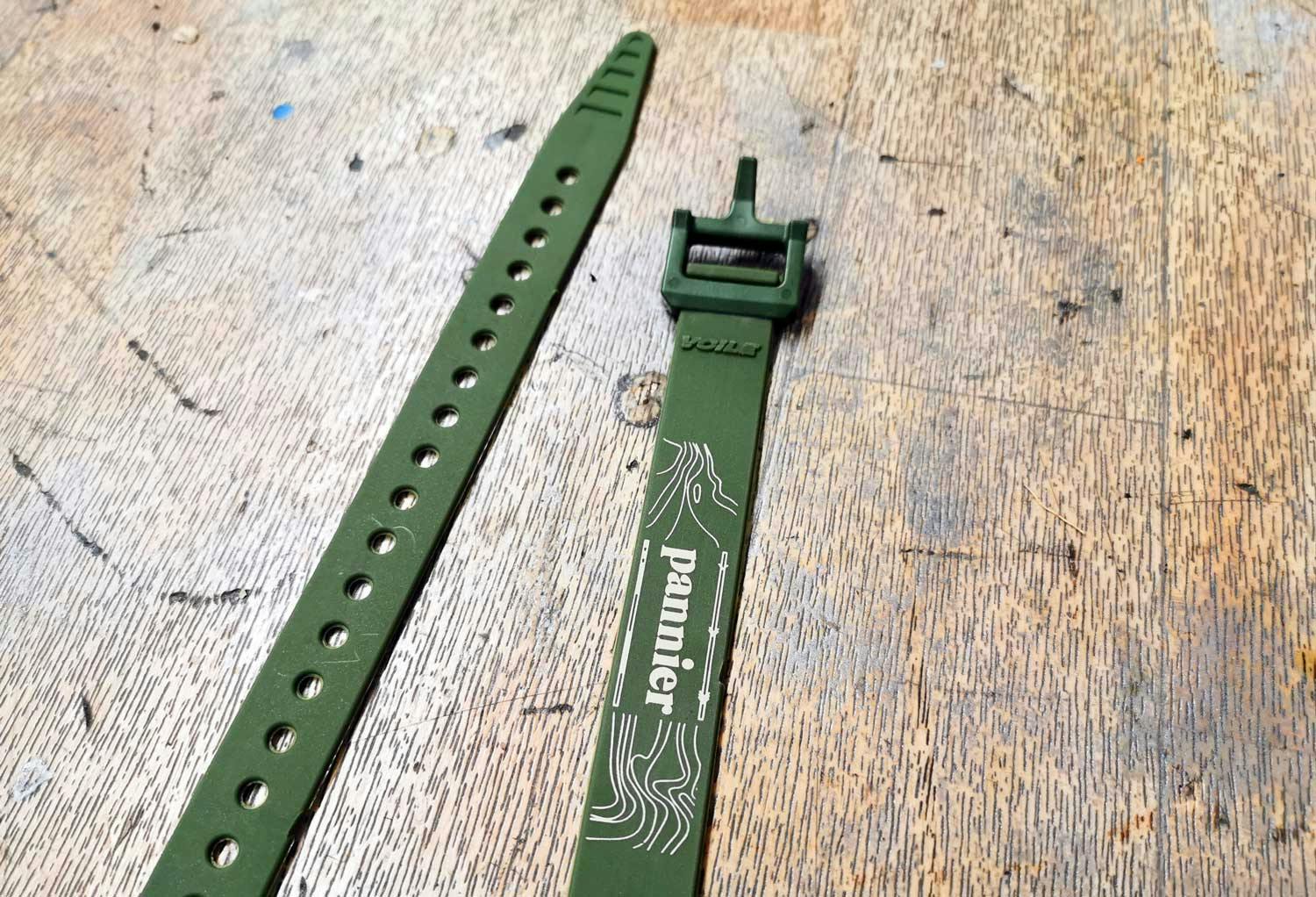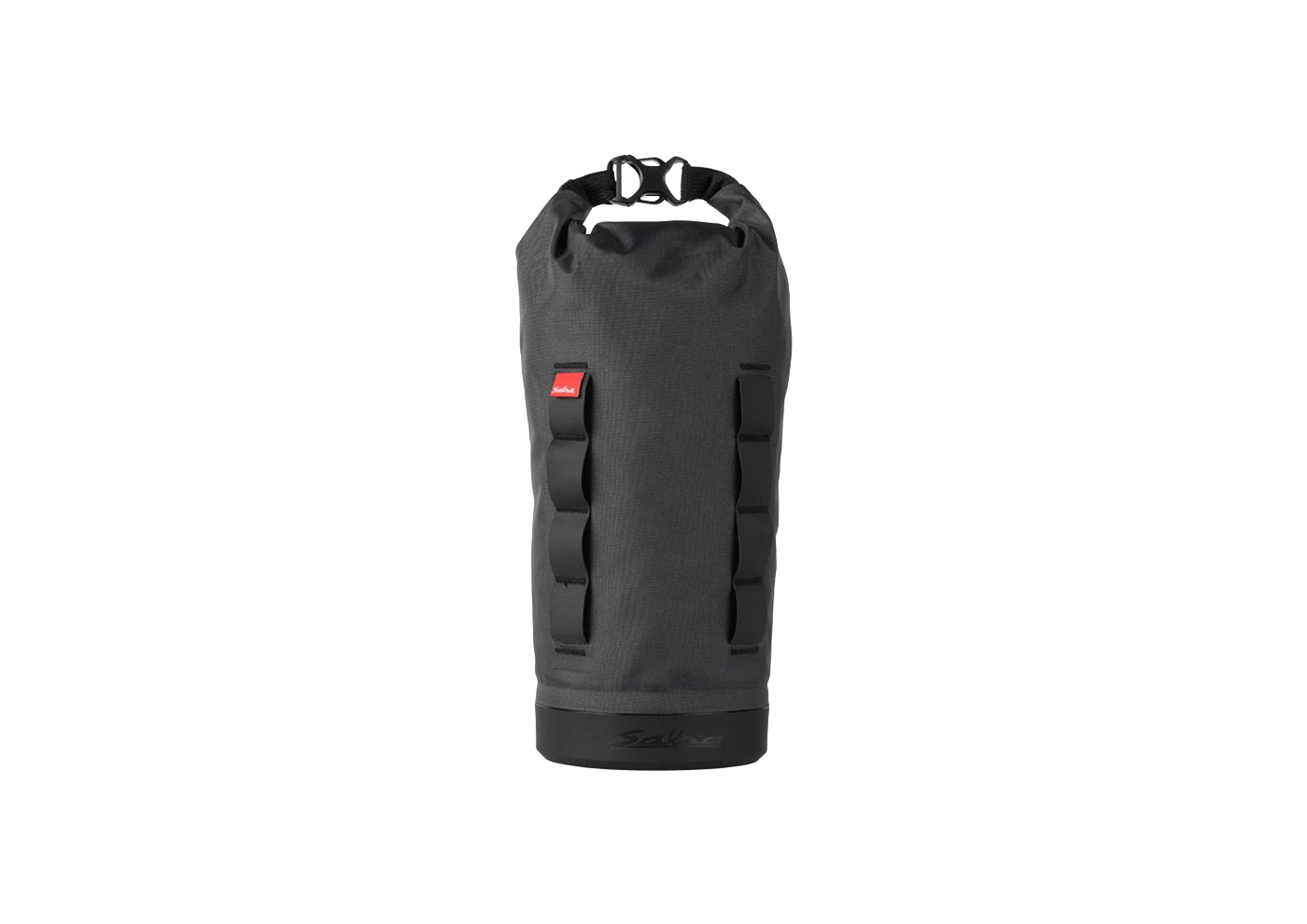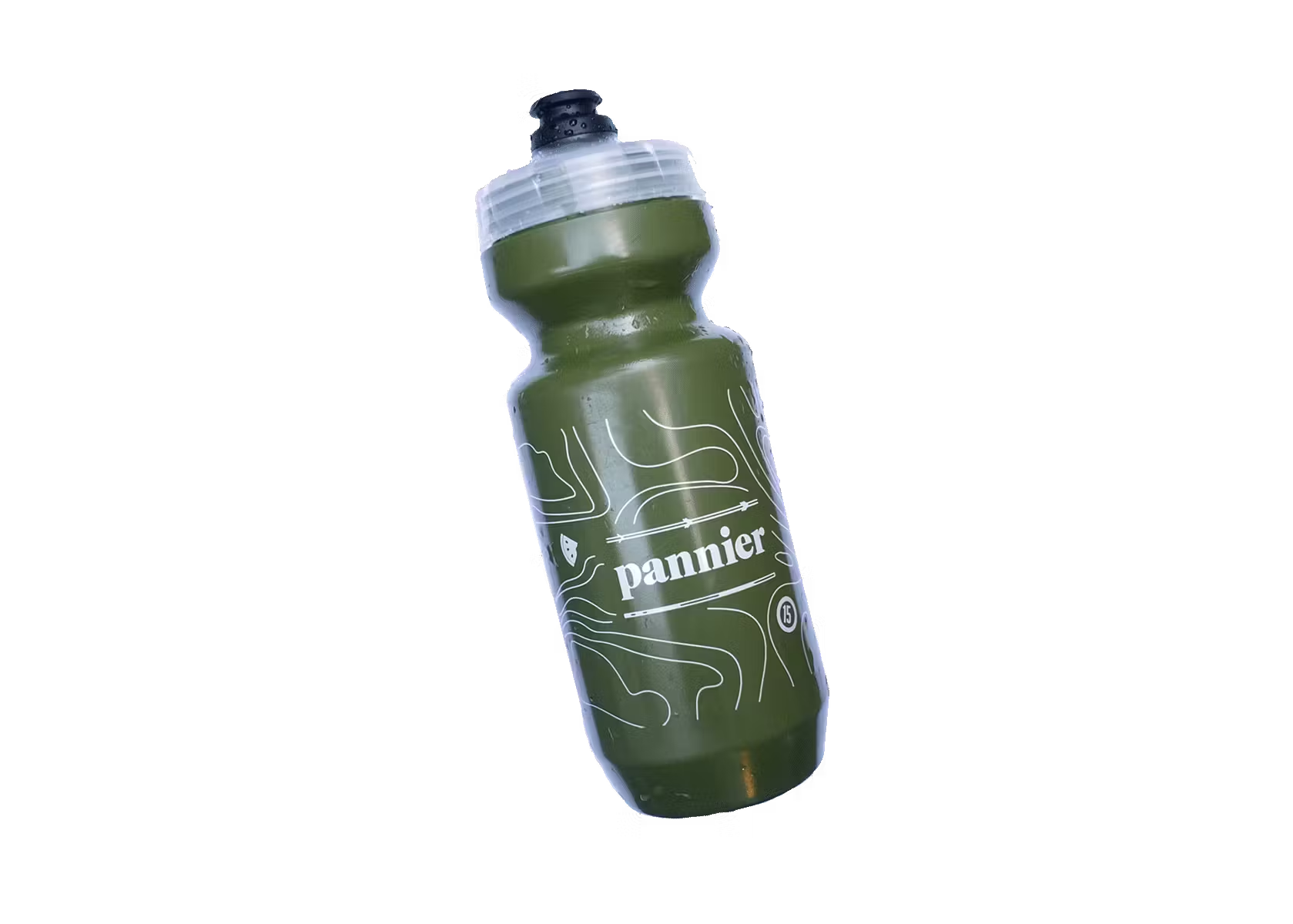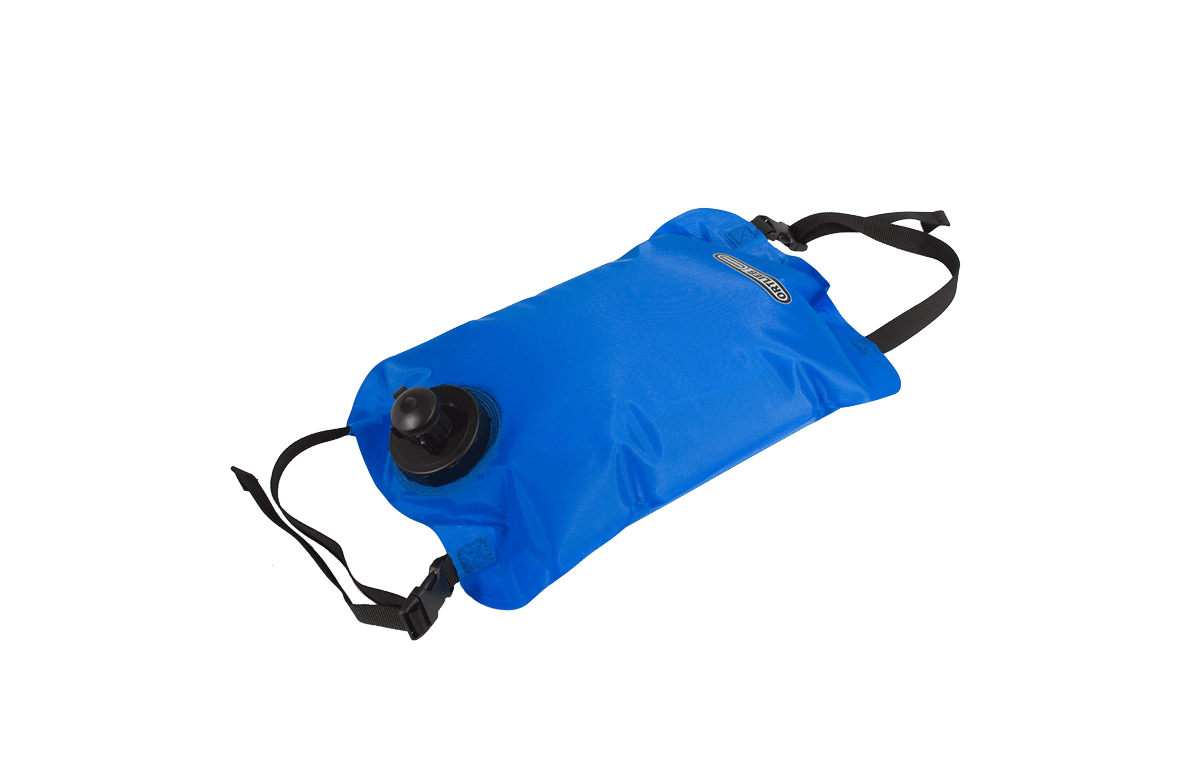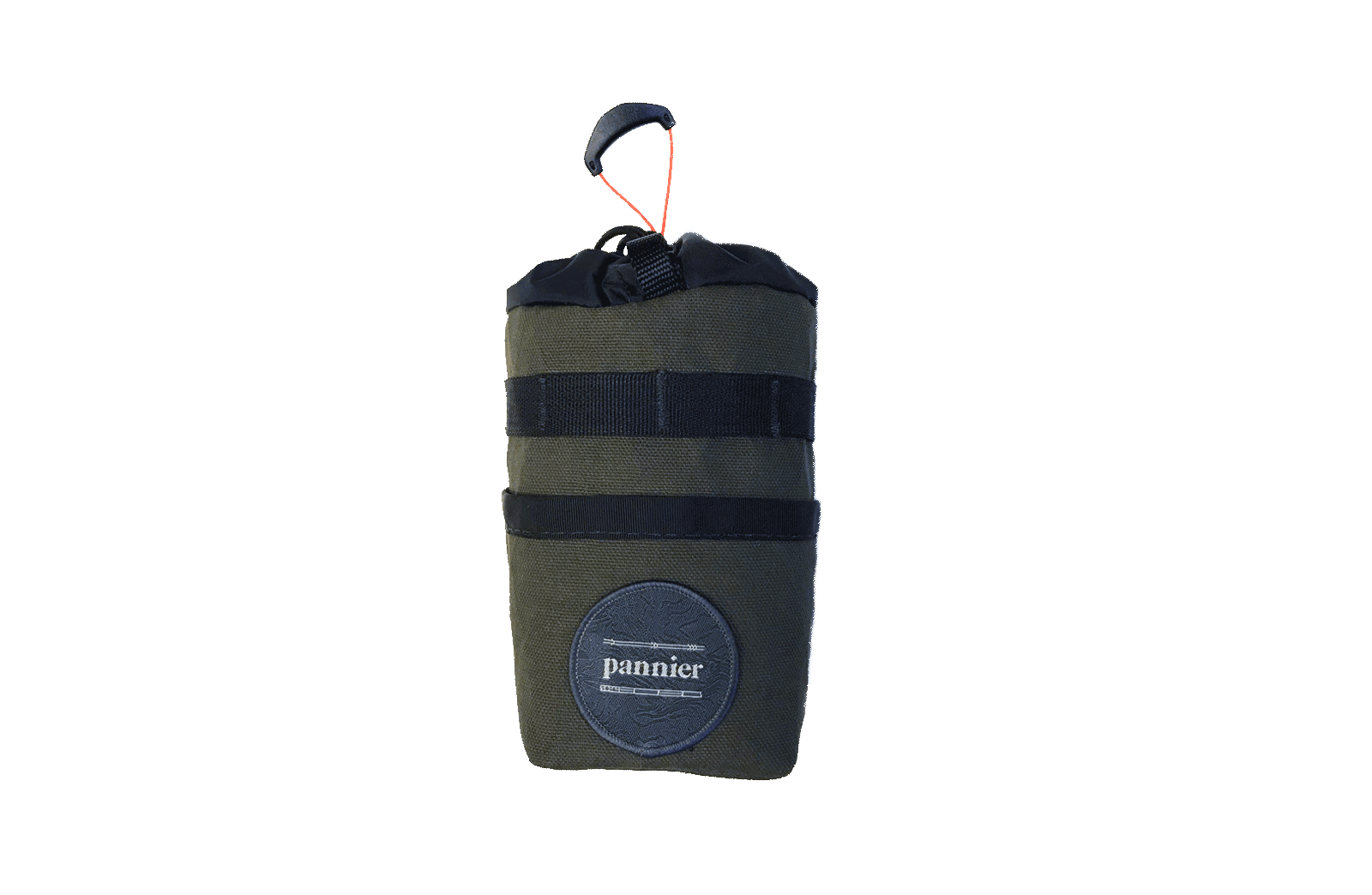AKA ‘The Plov Plod’

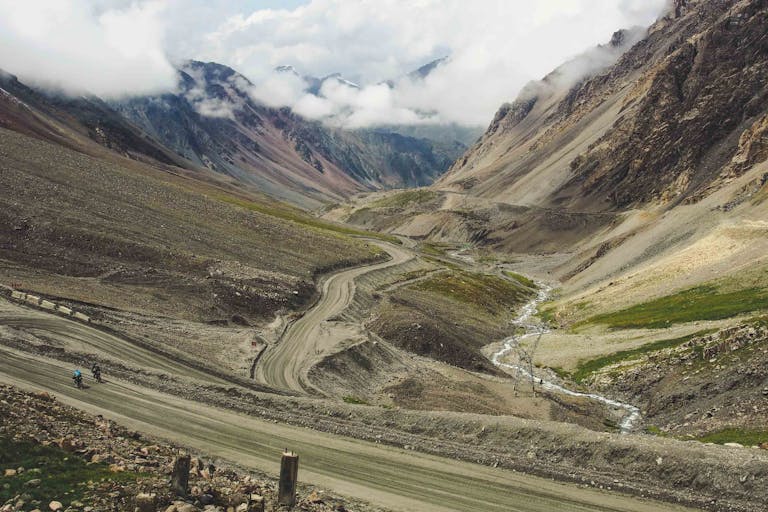
It’s our final morning in Kyrgyzstan, and I’m sat in the garden of our small hotel in Bishkek – the young capital city – collecting my thoughts from our Silk Road Mountain Race (SRMR) experience. I’ll be sure to miss the breakfast bowls of watermelon, boorsok bread bites, and instant coffee scattered across Kyrgyz breakfast tables. Five days since we finished the race, the feeling in my inner palms and two outer fingers on both hands still isn’t there, and my ankles are still painlessly swollen to sh1t – from high altitude water retention issues a wise Chris Phillips told me on the bus back to Bishkek, where several of us sat with our legs raised on headrests to try and drain the chunkiness away…
…first in my notes was something that stuck with me from the SRMR Finisher’s Party, even after a few beers and watermelon punches. Solo rider Brandon – successful second-timer after scratching in the first edition – talked about how rare and important it is we do things in life that we have absolutely no idea if we can or will finish. This was the appeal of the SRMR for him, and it rang true with me too. Without making daily offerings to the mountain, bike, weather, food, drink, body, Shamsi, Ton & Kegeti Pass Gods … there was every chance we wouldn’t make it through, no matter how experienced, fast, or confident a rider.
Even until the penultimate day, we had no idea how the race would pan out. It wasn’t until the Chon-Kemin Valley, with around 100km to go, that we knew we’d be able to stumble home on foot in the time left, if we had to. And we did(!) Simply finishing before the cut-off time was the original aim for us, in our first ever bikepacking ‘race’…
1 // KYRGYZSTAN
2 // ‘RACING’
3 // BIKES & KIT LIST
4 // THE STATS
Note.
– all photos were taken on our phones. A camera was too much to think about, worry about, and carry about.
– we finished in 12D 16H 38M.



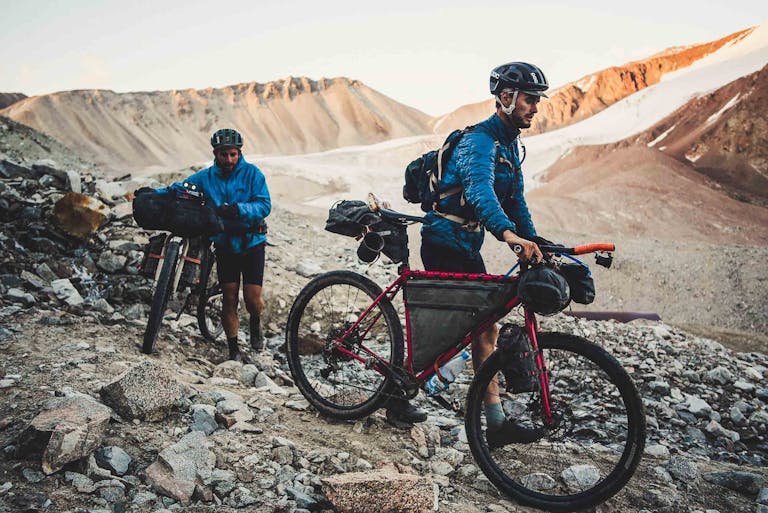
A race in a country that not many people know anything about (or just confuse with Kazakhstan) really appealed to me.
We touched down in Bishkek a few days before the race start for one week of hiking in the Ala Archa N.P and Karakol region, with local guides Barsbek and Junus. The perfect initiation to Kyrgyzstan – experiencing places and things we wouldn’t during the race, furthering our understanding of this proud nation and, importantly helping us acclimatise. From our Bishkek race base, the big alpine, 5000m+ snow-capped peaks of the Tian Shan Mountains hovered above the skyline in the summer haze. Big mountains. Big landscapes. Scale like nothing else. There is a reason the region is well established on the adventure cycling map. If you want to feel tiny, to feel insignificant, then Kyrgyzstan is definitely the place to go…






Once the lesson in basic greetings was complete, the next Kyrgyzstan initiation involved Kurut (dried milk snack balls) and Kymyz (fermented mare’s milk) … both popular in their nomadic culture. I’ll leave you to imagine how that went. Oh, and hearing about Kyrgyzstan’s two heroes – legend Manas, and writer Chinghiz Aitmatov. Because of Manas, legend has it that the country was formed strong and independent, against the Mongols. Because of Aitmatov, 200 countries know about Kyrgyzstan because of his worldwide book translations, of titles like “Tales of the Mountains and Steppes”. Their flag is symbolic too, of course: Red, for blood and bravery; The Sun, which has 40 rays for the 40 clans that Manas united; and The Tunduk, the crown of a traditional yurt to represent family and the home.
Geographically, Kyrgyzstan is locked between the much vaster, richer, more populated Kazakhstan and China to the north and south, and touches Tajikistan and Uzbekistan to the west. It has been a proud independent country since the breakup of the Soviet Union in 1991. However, Soviet influence is everywhere, they are very much politically aligned with Russia (the USA left in 2014, apparently) and around 20% of the population is Russian. For the first days in Bishkek, I found it really hard to place who the Kyrgyz People were, later to learn the population is made up of three distinctive peoples: white, fair Russian, dark Mongol, and Chinese. Add to that, the fact that it’s a growing melting pot for world tourism, the capital Bishkek is a really vibrant city and a great place to spend a couple of days. That’s about it, though. Historically a land of nomads, the cities and major towns (Bishkek, Osh and Karakol) are each less than 150 years old as major settlements. “We don’t have old buildings or monuments” said Barsbek, showing us around the oldest church in Karakol, that is younger than my terraced house in Sheffield. In Bishkek, the only real significant buildings being those built after Soviet Independence in 1991, and the gridded town plan reflects this. “For Kyrgyz people, Yurts are the best way – you can take your home with you, wherever you want. A bit like you with your tent and bike!” he went on to say. Experienced nomads can erect their yurts within two hours, by all accounts. He laughed that for him, his ideal holiday would be a big city break … whilst we wanted the opposite. Interesting for me, was visiting the striking Kyrgyz’ cities of the dead on the outskirts of towns and villages – “the only permanence in a nomadic land of impermanence” as thought-provokingly put by Margaret Morton in her fantastic photo book. Anyway, back to bikepacking … probably the most important take-away from this Journal:
– if you don’t like dill, tough. It’s in everything.









“There is no doubt about it, the Silk Road Mountain Race is the deep end; other worldly around every corner and over every col. It’s not until you are out there hike-a-biking landslipped passes at 4013m, or are still only halfway through a never-ending valley being invited into a yurt by a kid on his horse, in anticipation of the shrouding snowstorm that you really feel the majesty of Kyrgyzstan’s Tian Shan Mountains. The ideal bikepacking playground: challenging, remote, morale-boosting, morale-crushing, beautiful, ugly, all the adjectives. An incredible experience, and a relief to finish…”
The extraordinary world of endurance bike racing. Wow. Where do I start? I’d been an armchair rider – a “dotwatcher” – for a number of years, but this time round, we were two of the dots. I was nervous: how would we get on? Would we even make the cut-offs? We didn’t even tell anyone we were doing it, for fear of f*cking it up. Cass Gilbert asked why we signed up for the Silk Road Mountain Race in the first place. After a long pause, I thought about three things: wanting to visit and ride in Kyrgyzstan – generally not well known, but well established on the adventure cycling map – this proved the perfect excuse; wanting a tough challenge to focus on, to aim for, to train for … and, as Nelson put it at the finish “SRMR is a race that people really build up to. Something like the Tour Divide. There aren’t many of them”; and finishing the Silk Road Mountain Race would go a long way to validating the last few years’ bikepacking experience … and Pannier’s future in running bikepacking tours.
Racing as a Pannier Pair, with Dave, was official from the outset. I could and would not ride solo – shared experiences by bike are so important to me – and he was an obvious, natural, trusted partner. The two of us would have nine months to move from a leisure travelling mindset, to a racing one. Nine months to think about bikes and trimming our typical kit list. Nine months to prepare for riding 1710km of Kyrgyzstan’s remotest groads together.
Reading Issue 1 of the 2019 SRMR Race Manual, back in December, to begin the application process, I found myself fixated on the “toughest sections & notable difficulties” section – the disused, landslipped mountain passes above 3800m and the vast blank spaces on the map with no water and resupply. To make full sense of the race, I had to sketch out the route and start doodling all the key points – the prep process had begun – I was immersed in the race without even really thinking about it…






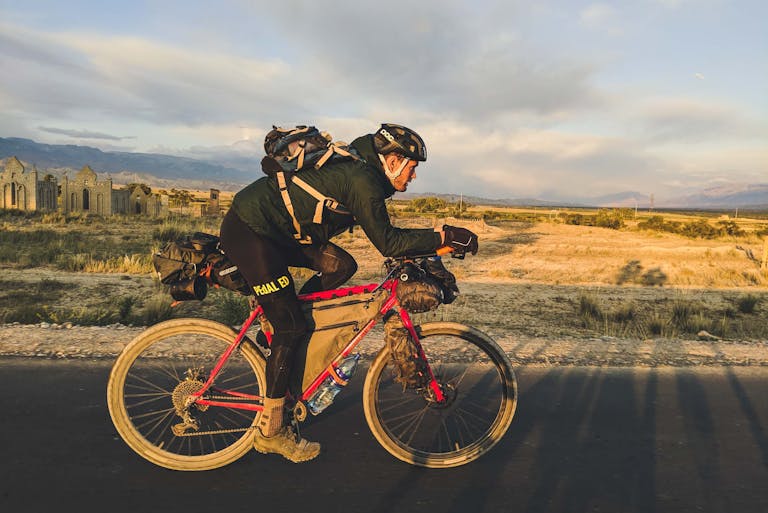
“Kilometres don’t ride themselves. Just keep moving forwards…”
Unsupported, multi-day endurance racing was a new world to us, and whilst I knew the leaders were impressive from my dotwatching career, it was even crazier to witness first hand riding the exact same Silk Road Mountain Race route. On certain sections Dave and I would look at each other: “surely no-one is riding this?” “How quick do they ride these never-ending gravel washboard sections?” “Do they even ride much quicker than us, or do they just stop/faff less?” “Or both?” We concluded that they do both. The leaders ride a bit quicker throughout, through all weathers, and only stop for 2-4 hours a day. That’s what Lael said she did, anyway. And it worked her to second place, finishing almost exactly five days before us. They are also going harder for a much shorter period, and Nelson made a good point that it’s much tougher for slower riders out on the course for a long, hard, battering 14 days than it is for the leaders in half the time. Now I’ve experienced it, I totally get it. For us, and I’m sure I speak for most of the riders, we just wanted to finish. Finishing the 1710km course was such an unknown, and without making daily offerings to the mountain, bike, weather, food, drink, body, Shamsi, Ton & Kegeti Pass Gods … there was every chance we wouldn’t make it through, no matter how experienced, fast, or confident a rider. When we were riding OK and ticking off the kms, we really felt like champs. “Oh, we can actually do this. Let’s race!” …then you hit a 20km hike-a-bike, and it all changes to the “…just keep moving forward…” mentality. Now I know how this race went (see the stats below), if I returned or went to ride another bikepacing race, I’d want to improve, be quicker, be more efficient. With the exception of winner Jakub (who is an accomplished trail-runner), the others in the top 10 have all done a lot of racing, and the cliche LeMond quote “It never gets easier, you just get faster” definitely rings true…
One thing we did was ride our own race. It’s not necessarily the right way of doing it if you want to position high, but … we deliberately avoided the internet, checking trackers on MapProgress (everyone else’s locations) throughout. This also made it a real nice surprise to bump into other riders – whether we caught them on the horizon, or they snuck up on us. The social and community aspect of the race is something I hadn’t appreciated before but with 140 starting, from all over the world, it was great to share the experience and meet so many like-minded folk. After days without seeing anyone from the race, spotting a control / media jeep or another rider turned out to be so important and morale boosting – we were part of something bigger, that’s what we were there for.
Kit-wise there is more about what we took, what we used and what we didn’t in the section below. For me, it was a case of cutting down massively, from the bikepacking kit list I was used to. No Bialetti, no sketchbook, no olive oil. Thinking about every essential and taking the odd risk. It was a case of looking at each item, and trying to improve with other kit I had or knew inside out. Marginal Gains. As well as being light, for me it was as much about the kit being bombproof and trustworthy. Knowing I was taking a down jacket and hat anyway, I opted for a lighter, more packable 350 down quilt instead of a sleeping bag, and lighter crankbrothers pedals, for example.
However, forget the bike and the kit. Something I didn’t quite appreciate about racing over 1710km is how important it is to look after no.1. As with adventure cycling in general, it’s back to basics: food, water and shelter. But, without resting when you need to, eating and drinking more than you need to, suncream-ing up before you get burnt, brushing your teeth etc etc. it’s a struggle to last, and most importantly enjoy it. Pausing for a hot drink or proper meal only takes 5-10 minutes, is something to look forward to, and really does make the difference in pedalling power but it’s so easy to talk yourself out of as time-wasting, or a faff. Whenever we were strong in body and mind, it allowed us to focus on kilometre krushing…







What did you eat? Dave
What were the go-to refuel snacks? Anna
Not enough, really. We took 3 x 500-1000KCal dehydrated meals each, for the first section, and one as backup for the rest of the race. We then planned to top up en-route, as we went. On the menu beyond that were packet noodles and Lepeshka bread for bigger meals, and crisp sandwiches for smaller. If our bikes were lighter, we’d have taken more of our own food, for sure. Snack wise, watered down Da Da Day (Cherry) and Coke were the go-to drinks, and Snickers / Albeni bars were the go-to fuel. Dave also had a jar of peanut butter. Resupply was one of the most tactical things, but it’s all laid out in the race manual. Obviously dehydrated meals required water, so it was important to ration enough (500ml) for food. Within reason, any water was fine for that given that we were boiling it. It’s worth mentioning that we probably had a daily 4-5000 calorie deficit, and it might sound silly (it didn’t cross my mind), but over a long-distance race like this there really is potential to drop a clothing size. By the end, for example, my leg warmers were too big, and bibs sat loose. I heard that some people tried to ‘load’ beforehand, therefore settling back to normal weight apres race … it’s just something to think about(!)
Any good flat whites? Harry
Nothing was flat in Kyrgyzstan
Was it fun? Tom
Yes. And no. It was incredible to be immersed in such a race, the bikepacking community and a country like Kyrgyzstan … but the riding, hiking and pressure, not always so much. I really enjoyed the preparation for Silk Road Mountain Race – the process of working out our bike setup, collating/editing a lighter-weight ‘racing’ bikepacking kit list than I am typically used to, the route homework etc. Obviously, some of the riding, scenery and moments had you grinning from ear-to-ear, but 1710kms felt like a long way. A really really long way. Leaving CP3 for the last 600km of mountainous terrain – the hardest riding of the race – was a real mental battle. But, that was the point and was self-inflicted. We had a suggestion for Nelson, actually, to put little signs on all the really tough/morale-crushing sections saying something like “…you signed up for this…”. Kyrgyz Beers and Brandy at the finish was fun…
Three things you wish you had, and hadn’t? Rich
Front suspension, sketchbook, crushed ice-machine
The sh1ts, spare riding clothes, second battery pack (those things are heavy dead-weights)
How many days ahead of the race did you arrive? Jolene
Just under a week. We did some high-altitude trekking in the Ala Archa N.P. and Karakol Region with the Race Partners, Nomads Land, to acclimatise. I’d recommend the Racek Basecamp (Pik Uchitel), and Ala-Kul treks if you’re thinking of heading to Kyrgyzstan. We avoided biking until the race … to keep our bikes, kit and cycling legs fresh. Hiking is way simpler, too.













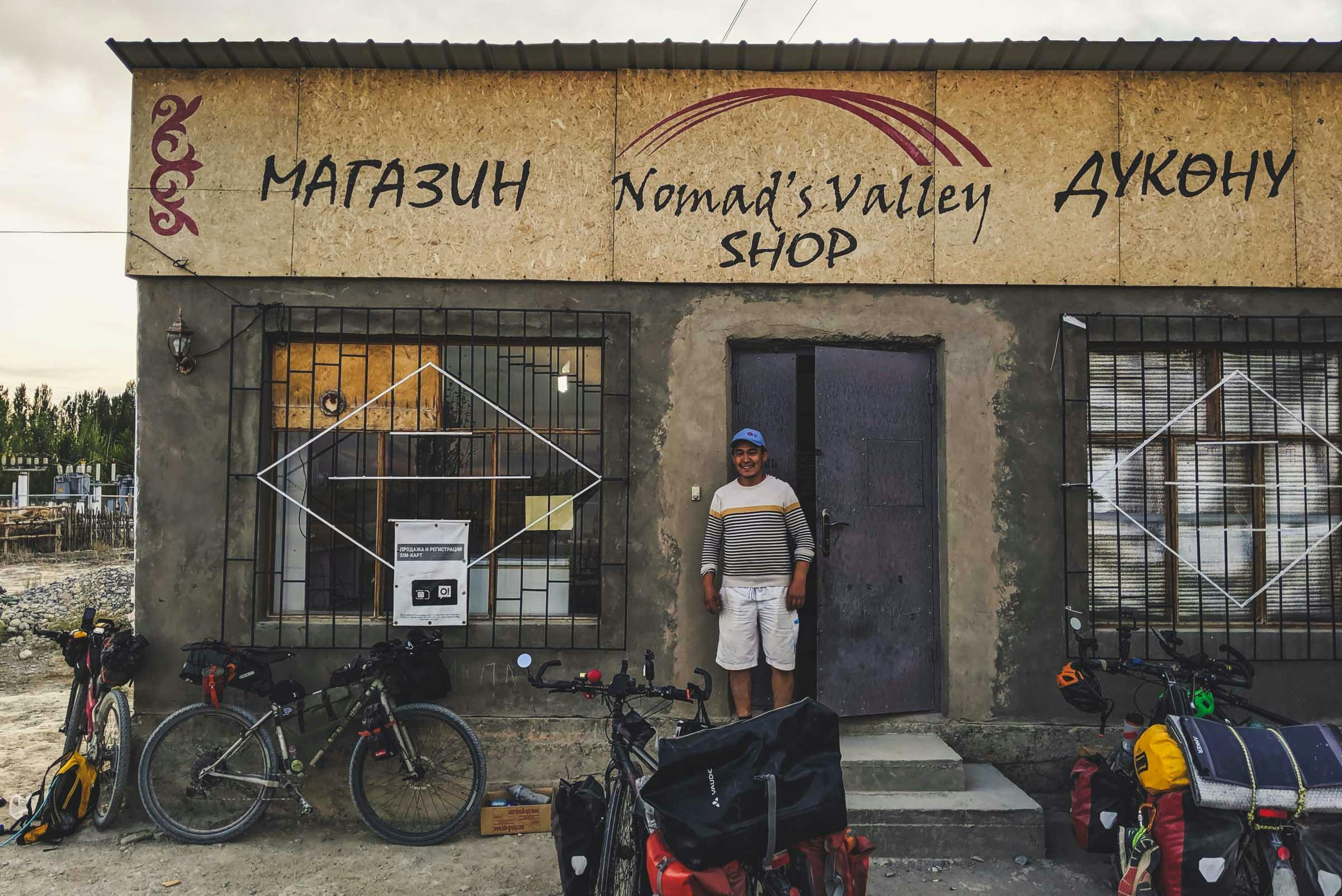
How did you get on communicating with the locals? Chris
We learned the very very basics in Kyrgyz – greetings, please, thank you etc – and then used cue sheets for specific needs like asking for bread or a guesthouse. Given the different alphabet, we simply had no chance reading and pronouncing Russian or Kyrgyz words. Out in the wild, we had several not-so-verbal ‘conversations’ with shepherds – they asking where we were going and whether we needed anything, us where their yurts were and how many sheep/goats/horses/cows they had. I relished these human moments; we were experiencing these lands for two weeks, these families called them home. Like anywhere, a smile went a long way. Without fail, every kid on the route ran towards us smiling, said “HELLOO” and went for a high-five when they saw us approaching. It’s like they get taught it at school … enough to put a smile back on your face, after not seeing anyone for a couple of days(!)
Did you avoid meat, given the bugs from the first edition? Tom
Yes, 100%. And un-filtered water and un-cooked food (salads, fruit etc). Anything that was unwashed / washed in bad water, basically. Pretty standard practice. Whilst it’s worked for several trips, Dave and I still had 12H illnesses, once each, on SRMR. Who knows…
Any training, or pre-trip prep? Danny
How did you prepare mentally and physically for the elevation etc? Carl
About ten years of bikepacking and outdoor experience, plenty of pannier.cc bikepacking trips and guiding together, plus sh1tloads of spinning at the gym. If you’re used to travelling by bike, you definitely have the core for SRMR: routine, camp setups, misery, elation, eating and drinking on-the-go. Fitness wise, the Dolomiti Superbike event one month before SRMR was a big marker for me. At 115km / 3300m+, I knew this was what we needed to do on a daily basis in Kyrgyzstan … so if I was fine doing that, I would be OK. We went out a few days early to acclimatise above 3000m but even that first time, altitude didn’t really affect us… up to 4013m. Yes, the air is thinner, and it’s harder/slower work but no adverse headaches or anything for either of us. Just vivid dreams! This will be different for you, but the only way to know is to go to these heights and find out. Tough one. Pre-trip preparation is just a case of route and resupply homework. Everything else – bike and kit – is just built on experience … definitely don’t take kit you’ve never used before(!)
How did you work as a pair? Will
Shared experience is so important to me, so I wouldn’t have done it solo … and Dave said the same. So that was a good start – we wouldn’t have been riding the SRMR without each other in the first place. We’ve both ridden and run a lot of trips together in the last 1.5 years and naturally taken roles. Dave is definitely the more practical bike guy; I’m everything but the bike(!). He’s a strong rider; I would class myself as diesel. He’s got a crazy quick metabolism; I don’t. He gets cold; I don’t. However, our shared goal was to finish the SRMR which meant looking after ourselves and helping each other keep moving across kms of tricky terrain, in all weathers. Organising and guiding bikepacking tours has been great prep for this – first up and last to bed, route and timings interrogation, and empathy. Empathy is the big one when riding a race as a pair, no more than when things aren’t going well. We were both ill at points – me more of a spanner as we had to put the tents up at 17.00 one day, with plenty of light left, after just 87kms. Dave was the one who made the hard/annoying decision to stop, and it was the right one. I was down and out. The following day, we were back to normal. A lot of pairs laughed about how they didn’t talk a lot / at all. This is true, and no bad thing. Marmot and eagle spotting, for example, became very repetitive after day two, so you even stop pointing things like that out. You just both know to keep moving forwards, or you won’t finish. Kilometres don’t ride themselves. We both said that simply having someone else there helped through the tough/dangerous and lonely never-ending sections. One of our saving graces was working hard early on in the race to be a couple of days ahead of the cut off. This gave us some leeway and made us slightly more relaxed I think, whether that was a good or a bad thing?! David & Ben had it the other way – they were ill at the start and played catchup … on a mission … and finished a day before us. Riding wise, we kind-of-knew we wouldn’t always pedal in unison side-by-side for 1710km; it wouldn’t be natural. Besides, it wasn’t always feasible to benefit from drafting, for the majority of the route. Dave and I just planned to keep in sight of each other and, as per Pannier tour rules, to wait at every junction to check and collaborate on the correct way. Having our own space also helped us I think – we both took our own tents for privacy and independence, also should either of us had to scratch for some reason…
Balance of progress and sleep? Proper rest, or bite size? James
We tried both, but burning out after a 19H riding session on day two (stopping at 04.30) we realised that pausing for proper rest, during darkness hours, was way more efficient and sensible for us. Unless you’re in it to win it or gunning for a quick time, there wasn’t much to gain. In the end, three factors influenced our stopping moments and locations during the race: ticking-off landmark/psychological points on the route, darkness and bad weather. Our average daily stopping time – 9H 45M – actually tallies up with the hours of darkness (20.00 – 05.30) which is what we based most of our riding days on. Riding through the night would have improved our finish time, of course, but also tired us out more. It’s a fine line to be working on. Bad weather also made us stick the tents up earlier than planned on a couple of days. However, the overriding factor, for us, was always ticking off a key section of the route: summiting one of the big passes / reaching a checkpoint / passing a milestone km marker. They would serve to drive us on, before retreating to the sanctuary of our tents. Huge psychological boosts that meant we could rest happy. Memorable moments where this was the case, was getting up and over both the Kegeti, and Shamsi passes before setting up camp. There isn’t a right or wrong formula though. Mid-pack, we were constantly leapfrogging other riders – we’d continue on through the night for an extra couple of hours, to then be overtaken the next morning by riders who stopped earlier but were up pre-dawn etc. Structure is key. Oh to be pro…
Other random race notes
– The top is never the top, and you never get as far as you planned. I timed the last 4KM (+400m) of our Ton Pass climb, and it took us 1.5 hours…
– Don’t waste time trying to keep your feet dry at a river crossing. It won’t happen, and even if you succeed you’ll just get to one round the corner that is waist deep.
– Lithium batteries are lighter and way more efficient.
– Practise your mental maths. It’s a constant case of checking km and m+. An altometer is super useful.
– Checkpoints are ace for experience, social and race community but potential hives for illness and time-wasting … and negativity, at times.
– Slow or stop for dogs. It’s not at all instinctive, but it works. Save your energy. Mime a rock throw, if needed.
– Make time for hot/hearty food and drinks. Don’t underestimate the morale and physical boost, in the wild. In a race it’s easy to not bother, or think it’s a waste of time…


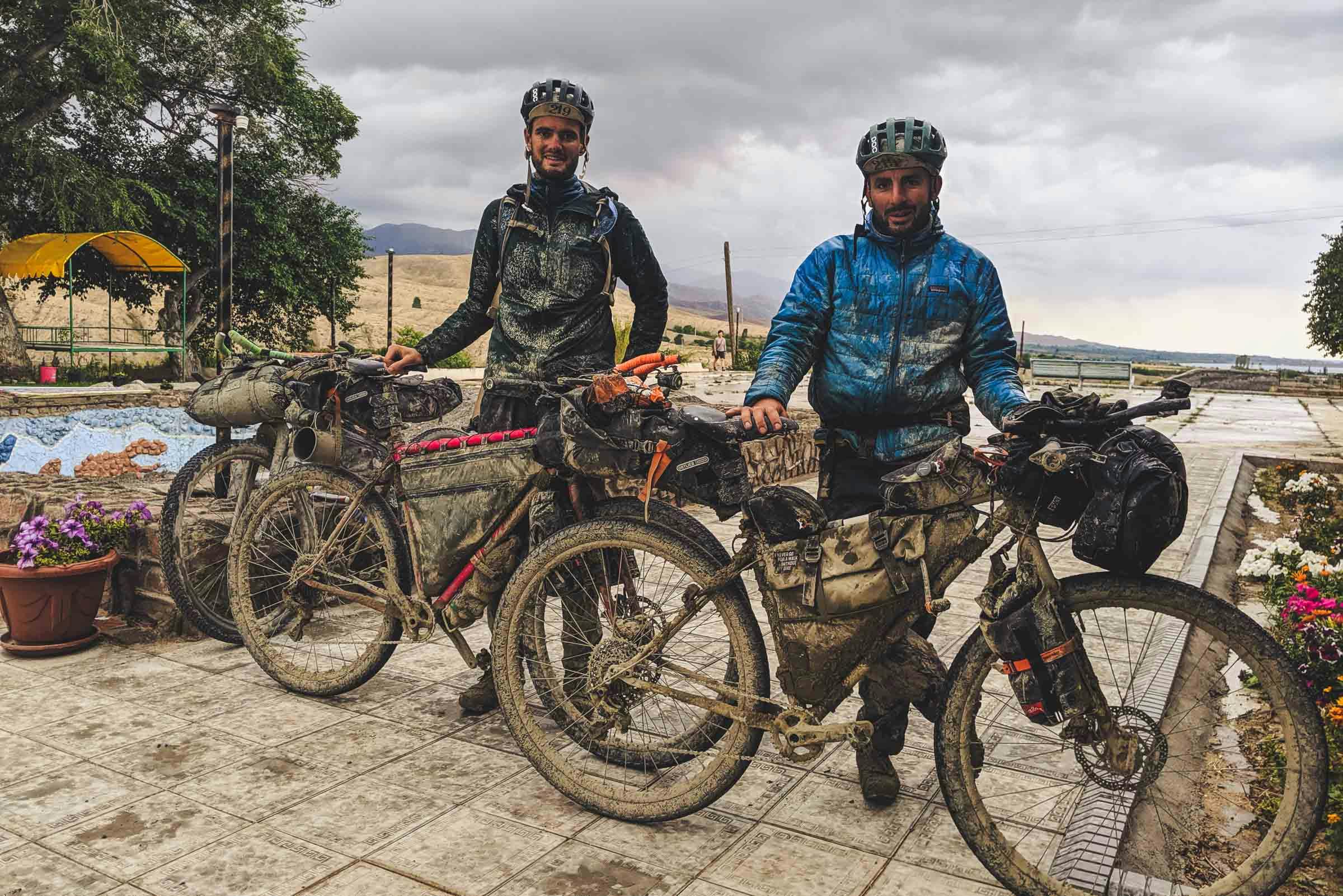


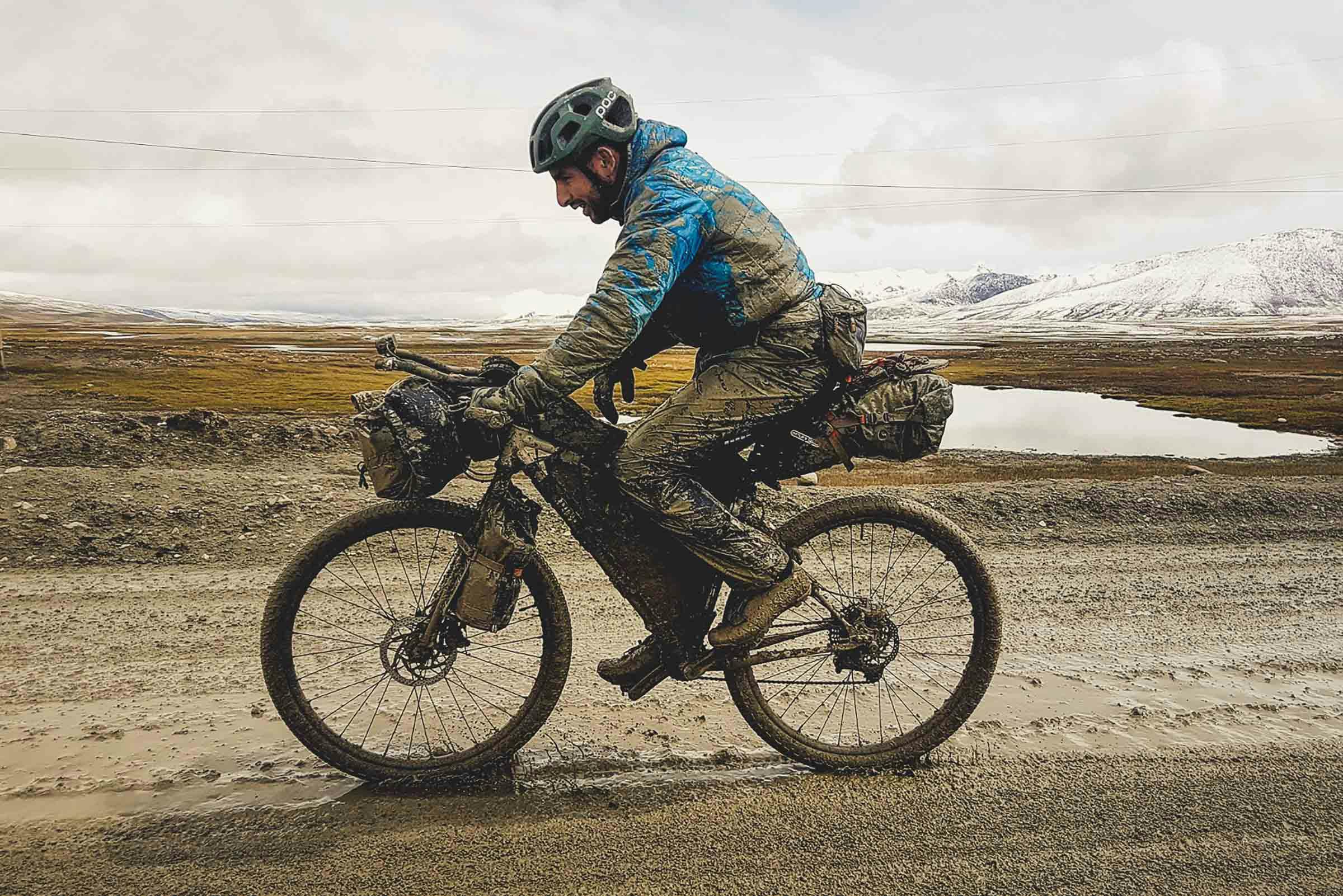

“Organising and guiding bikepacking tours was great prep for the SRMR – first up and last to bed, route and timings interrogation, and empathy. Empathy is the big one when riding a race as a pair, no more than when things aren’t going well…”


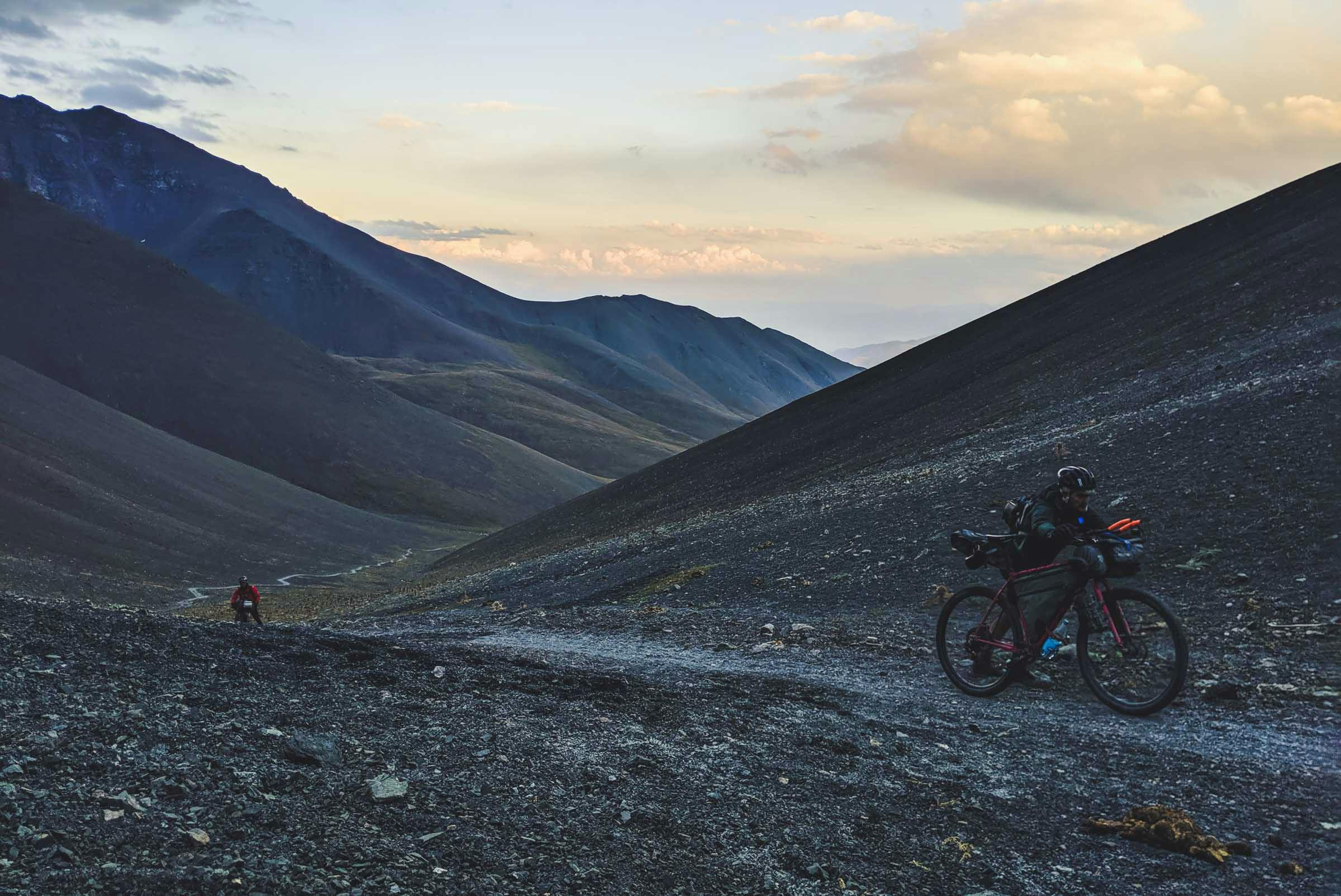
“Hauling our bikes over riverbank rocks, the Shamsi Shepherds’ looks of confusion echoed in my mind; our chainring scrapes adding to other visible marks left by the quicker riders, those from the first edition and other intrepid travellers. All evidence for the future myths that a lot of odd folk headed over Shamsi Pass with loaded bikepacking bikes…”


“Three factors influenced our pausing points during the race: darkness, bad weather, and most importantly ticking-off a landmark section of the route – summiting one of the big passes / reaching a checkpoint / passing a milestone km marker. They would serve to drive us on, before retreating to the sanctuary of our tents. Huge psychological boosts that meant we could rest happy…”




The best thing about the Silk Road Mountain Race? Nothing will feel tough on a bike, again…
A special thanks to Nelson (Race Director) & family, and sponsors/partners for putting on the Silk Road Mountain Race and inspiring us to finish our first bikepacking race, the media teams for relaying the experience back to folk at home, the volunteers for smiling, chatting and encouraging throughout … and all the riders we shared some wild kilometres with, who really made the experience. Lastly, a special shoutout to a few other mid-pack folk we met and rode with, whose efforts deserve a mention:
– Guy, who we passed within the first 24H of the race … riding with only one crank (pedalling one-footed). He rode over 100km like this on day one/two, before taking 12-15H out, to taxi back to Bishkek and get it fixed. Later in the race, one of his pedals then broke … so he had to find a solution for that, and ended up switching it with a Kyrgyz villager’s pedal, reflectors n’all (he asked first, apparently). Guy finished a day behind us…
– Bengt and Brandon. Both came back to finish after scratching last year … and finished. There were a couple of others too, but our paths didn’t really cross…
– Naresh and Raphael. The biggest troopers of the race for me. From shredded tyres to shredded achilles, every time we thought they were down and out they’d end up passing us at night, or the next day. We leapfrogged for the whole 12.5 days, and they both finished a few hours before us…


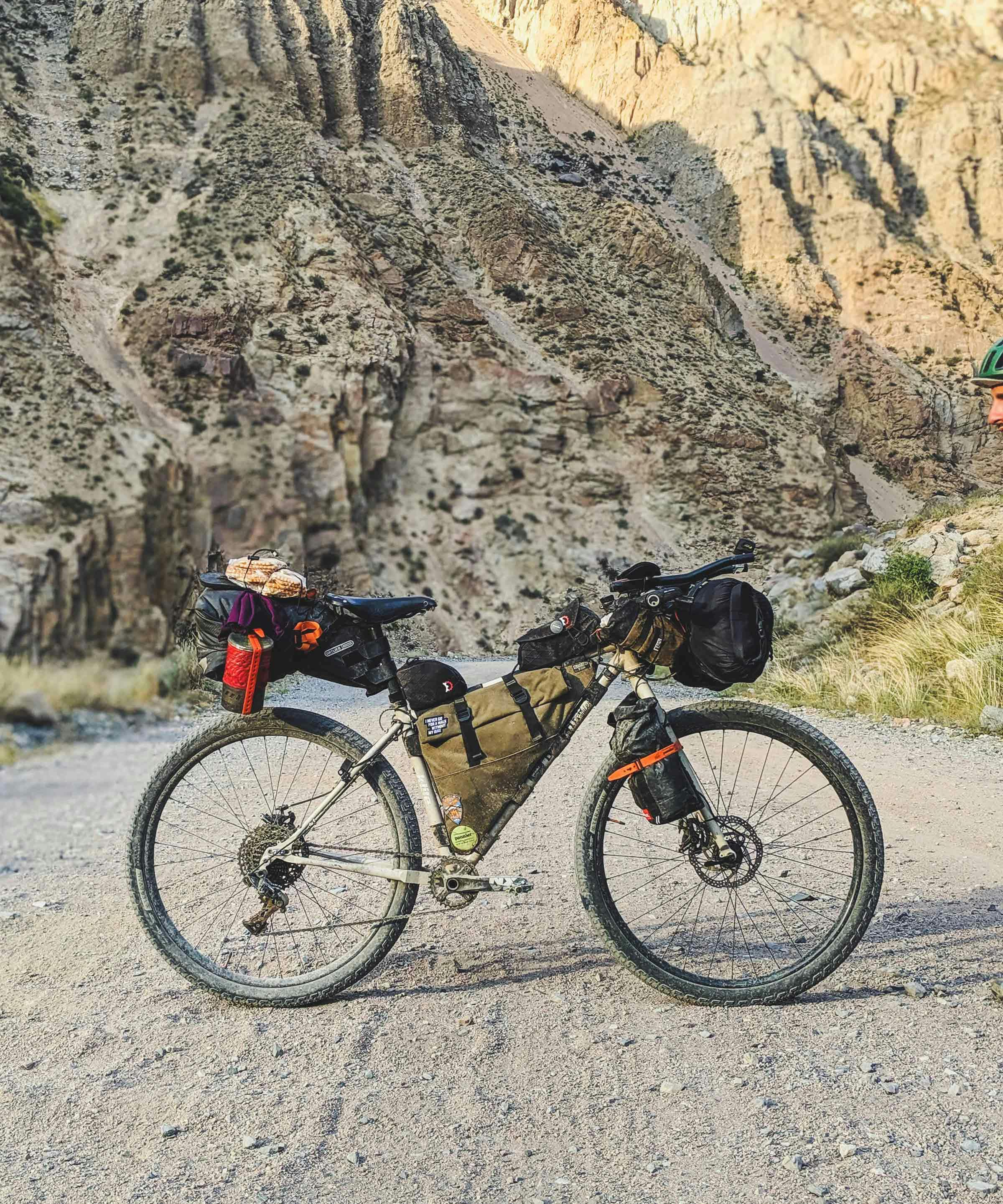
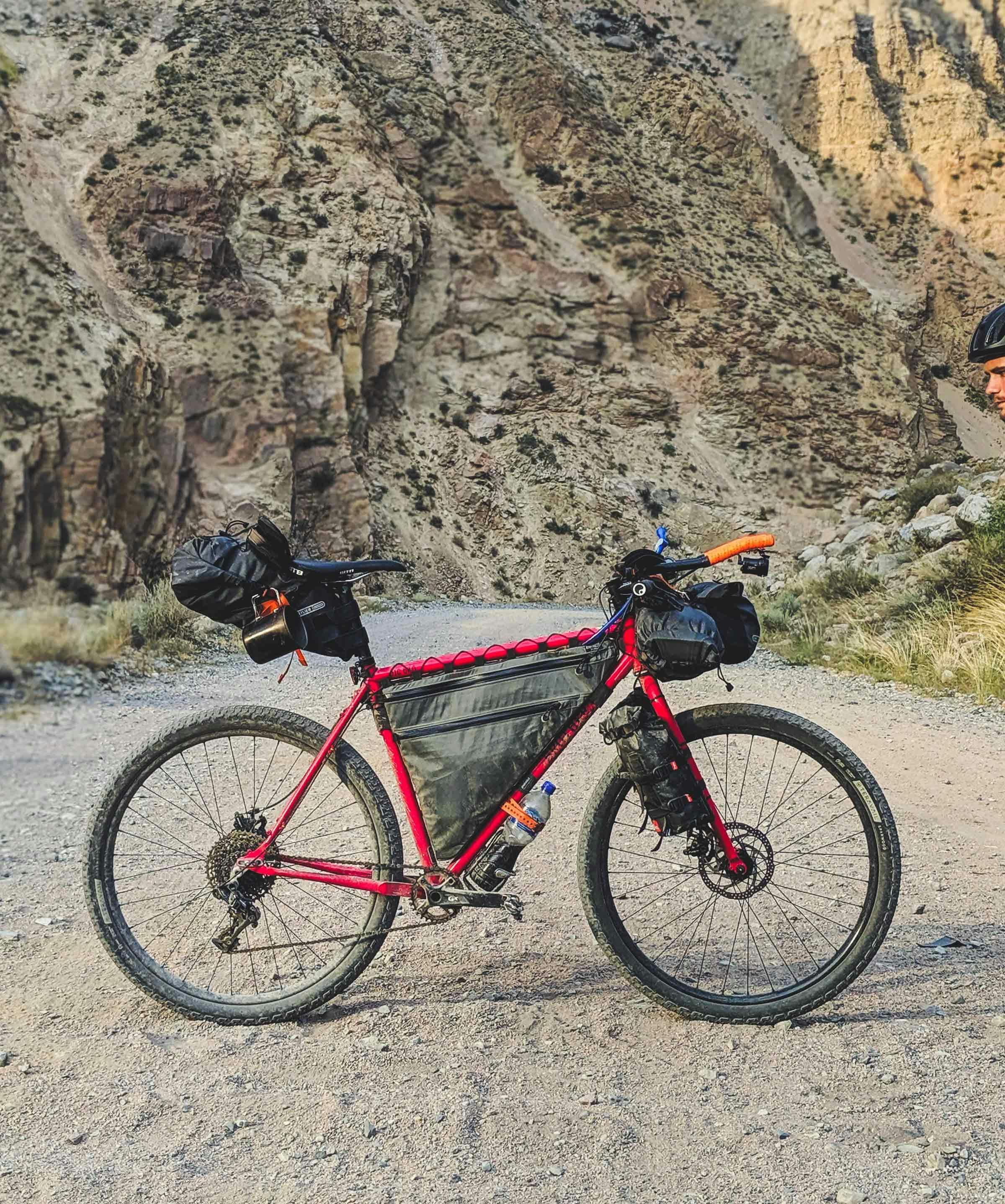

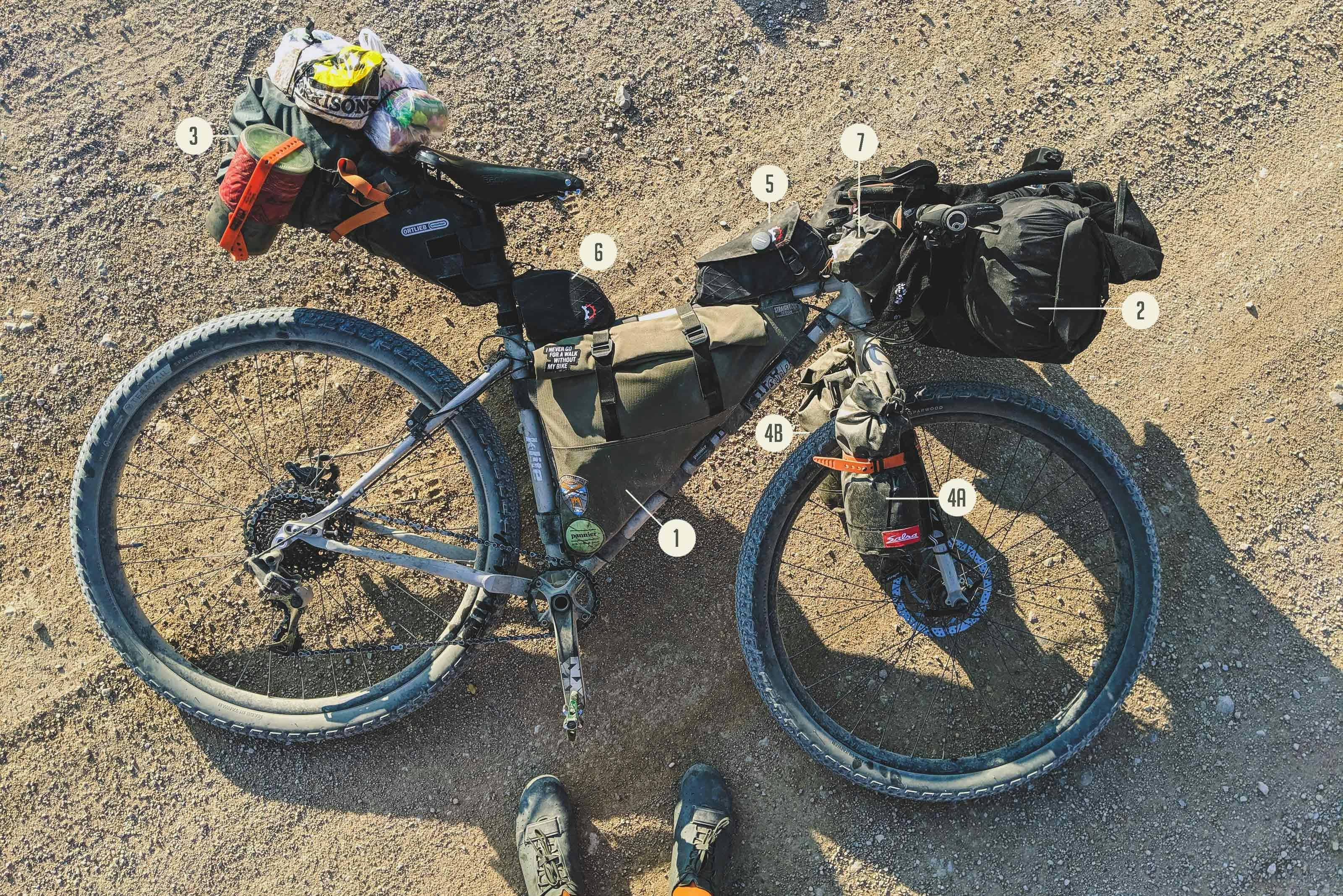
Frame & Forks // Big Bro (CroMo Steel) – Brother Cycles
Bars, Headset, Stem & Seatpost // Big Bro Stock Build – FSA, Promax etc.
Rims // Vapour 35, 29″ – Halo
Front Dynamo Hub // Dynohub – SP
Tyres // Sparwood 2.2″ Light & Supple (tubeless) – Teravail
Lights & Power // Bikepacker Ultra, Qube Rear Flashers & Dual USB Charger – KLite
Brakes // Spyre 180mm Front & 160mm Rear – TRP
Shifter // GX 11 Speed – SRAM
Crankset // GX 30t (165mm) – SRAM
Cassette // GX 11-42 – SRAM
Saddle // B17 Standard – Brooks England
Grips // GP2 – Ergon
Aero Bars // BHB-58 Aerolight Clip-On Bars – BBB
Pedals // Candy 2 – crankbrothers
Handlebar Cradle (2) // EXP Anything Cradle – Salsa Cycles
Handlebar Dry Bag (2) // Burra Burra Drypack 23L – Specialized
Fork Cradles (4A/B) // HD Anything Cages – Salsa Cycles
Fork Dry Bags (4A/B) // Anything Cage Bag – Salsa Cycles
Seatpack (3) // 16.5L Seatpack – Ortlieb
Framepack (1) // Custom – Straight Cut Design
Top Tube Packs (5/6) // Jerrycan & Mag Tank – Revelate Designs
Stem Bag (7) // Snack Pack – Pannier.cc x Wizard Works
Our bikes were not ones that would *win* the SRMR – you should’ve felt them – but bikes we decided on to get us round the 1710km mountainous off-road route, safely and relatively comfortably in a #steelisreal way. Hindsight is classic, but starting with a lighter bike would’ve undoubtedly helped on the long climbs and kms of hike-a-bike … and some front travel would’ve been welcome over the 12-13 days to comfort the long, chunky / washboard / downhill sections.
Our gearing (30/42) was ideal for the demands of SRMR. There were rarely any sections we spun out, and it was fine for pedalling the steep rough stuff. At any point we wished for a dinner plate on the back, hiking was the more efficient and quicker option anyway(!). It was hard to complain when we were riding alongside Ben – first single-speed finisher – running 32/21. One thing is for sure, there is no way I’d have ridden it on anything less than 2″ tyres…

This is the trimmed kit list from after the race, photographed as I packed my bike away. Items left out, that I took but didn’t use: spare bibs, spare merino top, deodorant, small towel, off-the-bike footwear (Bedrock Sandals), boxers, insulated gilet, second 10000mAh battery pack.
Note. Bracketed Numbers = bag storage location on bike, as above…
RIDING KIT // Helmet, SRMR Cap, Shoes, Bibs, Socks, Merino Top, Leg Warmers (4A/B), Pertex Overtrousers (2) Gore-Tex Jacket (2), Primaloft Jacket (2), Mitts, Gloves, Watch, Sunglasses
OFF-THE-BIKE KIT (3) // Down Jacket, Ski Socks, Polartec Leggings, Wooly Hat
NAVIGATION // Garmin ETrex 20, Phone-Komoot & Phone Case (5), Map Case & Printed Route Cards & Overview Map (Hip Pack), Compass (5)
SHELTER // MSR Hubba Tent (Inner 4A, Outer 4B, Poles & Pegs 2), Thermarest NeoAir Xlite Sleep Mat (2), Cumulus 350 Quilt (2)
FOOD & DRINK // Windburner Stove (3)>(2), 230g Gas Canister (2), Lighter (6), Camp Knife (6), Spork (5), Collapsible Cup, 4L Waterbag with in-line filter (1), Trailshot Water Filter (1), 14 x Rehydration Sachets (1), 14 x Vitamin-Immune Tablets (1), 4 x 1000KCal Dehydrated Meals (1), 6 x Oats Sachets (1), Snickers & Albeni Choc Bars (7), Lepeshka Bread (3), Packet Noodles (1), 3-in-1 Coffee Sachets (1)…
ELECTRONICS & ACCESSORIES (2 / Hip Pack) // Dry Bag, Double USB Wall Plug, USB 10000mAh Powerbank, Charge/Data Cables, Headphones , Headtorch, Spare Lithium AA & AAA Batteries, Wallet (£200 of Kyrgyz SOM and £50 of USD), Passport, Biro Pen
HYGIENE (3) // Biodegradable Wet Wipes, Tissues, Hand Sanitiser, Toothbrush, Toothpaste, Suncream, Sudocrem
TOOLS & SPARES (1) // Dry Bag, Pump, Multitool, Leatherman Squirt PS4, Tyre Lever, Voile Straps, Bungee Straps, Spokes, Derailleur Hanger, Brake Pads, Gear & Brake Cables, Length of 11-Speed Chain, Quicklink, Cleat & Bolts, Tyre Boot, Inner Tubes, Dynaplug Tool, Patches, Thermarest Repair Kit, Seatpack Clips, Waterbag Seal, Carabiner, Lace, Guy Line, Tape, Cable Ties, Lube, Chainring Bolts
FIRST AID (3) // Dry Bag, Emergency Bivvy Bag, TCP, Hydrocortisone Cream, Sterile Wipes, Antibiotics (Amoxcillin), Nurofen tabs, Immodium tabs, Allergy tabs, Steristrips, Plasters, Triangular Bandage, Sterile Dressings, Gloves, Tick Card
Consumables Notes:
– 4 x 500-100KCal meal pouches each was just about enough, with the re-supply options en-route. If our bikes were lighter, we’d have taken more of our own food.
– 1 x 4L Waterbag, and a 600ml bottle was fine for the route, even on the longer drought sections. I always carry Voile / bungee straps to add water bottles to the bike, if needed, anyway…
– 1 x 230g gas canister was more than enough for the pair of us to boil all the water we needed (hot drinks, and dehydrated meals) over the 13 days
– 4 x Lithium AA batteries were enough spares for the Garmin eTrex (15-sec screen battery-saving mode, turned off overnight), and 4-6 x Lithium AAA batteries for headtorch and backup for SPOT Tracker (which lasted on start batteries)


DAY 1
Bishkek – Kegeti Pass – Karakol Valley
115km / 3692M+
14H 31M (7.9KPH)
6075 Cals
Accommodation: Tent (3000m)
DAY 2
Karakol Valley – Tuz Ashuu Pass
240km / 2515M+
20H 17M (11.8KPH)
8020 Cals
Accommodation: Tent (2750m)
DAY 3
Tuz Ashuu Pass – CP1 – Moldo-Ashuu Pass – Baetov
131km / 1452M+
11H 24M (11.4KPH
)
4600 Cals
Accommodation: Guesthouse (2000m)
DAY 4
Baetov – Chinese Border (Chatyr-Kul Lake)
140km / 2997M+
13H 27M (
10.4KPH
)
6000Cals
Accommodation: Tent (3600m)
DAY 5
Chinese Border – CP2 (Kel-Suu Lake)
120km / 667M+ *Dave ill*
11H 32
M (10.3KPH
)
3500Cals
Accommodation: Yurt (4020m)
DAY 6
CP2 – Old Soviet Road – Naryn
186km / 2172M+
15H 50M (11.8KPH
)
6400Cals
Accommodation: Tent (2400m)
DAY 7
Naryn – Arabel Valley
104km / 1600M+
10H 38M (9.8KPH
)
4000Cals
Accommodation: Tent (3000m)
DAY 8
Arabel Valley – Arabel Pass – CP3 (Tamga)
90km / 947M+
9H 20M (9.5KPH
)
3200Cals
Accommodation: Guesthouse (1700m)
DAY 9
CP3 – Ton Pass
87km / 2670M+
*Stef ill*
11H 43M (7.4KPH
)
4500Cals
Accommodation: Tent (3500m)
DAY 10
Ton Pass – Kochkor Valley
115km / 1662M+
13H 30M (8.5KPH)
4300Cals
Accommodation: Tent (2400m)
DAY 11
Kochkor Valley – Shamsi Pass
134km / 2182M+
13H 41M (
9.8KPH)
5300Cals
Accommodation: Tent (2500m)
DAY 12
Shamsi Pass – Shabdan
117km / 2261M+
14H 25M (8.1KPH
)
4900Cals
Accommodation: Guesthouse (1500m)
DAY 13
Shabdan – Kok-Airyk Pass – CP4 (Cholpon-Ata)
138km / 3032M+
19H 15M (7.2KPH
)
5700Cals
Accommodation: Guesthouse (1600m)
Distance – 1717KM
Elevation Gain – 27,849M+
Time – 12D 16H 38M (304H 38M)
Moving Time – 179H 30M
Stop/Sleep Time – 125H 8M
Calories – 98,145 (66,495 + 31,650 basic)
Distance – 135.5KM
Elevation Gain – 2200M+
Moving Time – 14H 15M
Stop/Sleep Time – 9H 45M
Calories – 7750 (5250 + 2500 basic)
Note.
1 // Our average daily stopping time (9H 45M) actually tallies up with the hours of darkness (20.00 – 06.00) which is what we based most of our riding days on. Riding through the night would have improved our finish time, of course, but also tired us out more. It’s a fine line to be working on…
2 // Based on burning 7750 Calories a day, we were probably running on a deficit of 4-5000 /day. There are only so many oats, de-hydrated meals, noodles, bread, 3-in-1 coffee sachets and Snickers you can eat. In addition to both being ill for 12H, we each lost between 5-10kg in bodyweight over the 12.66 days.

Words
Stefan Amato
Photos
Stefan Amato
David Sear
Additional Photos
Rugile Kaladyte (SRMR)
Danil Usmanov (SRMR)
Markus Stitz
Amy Jones
Jeff Liu
